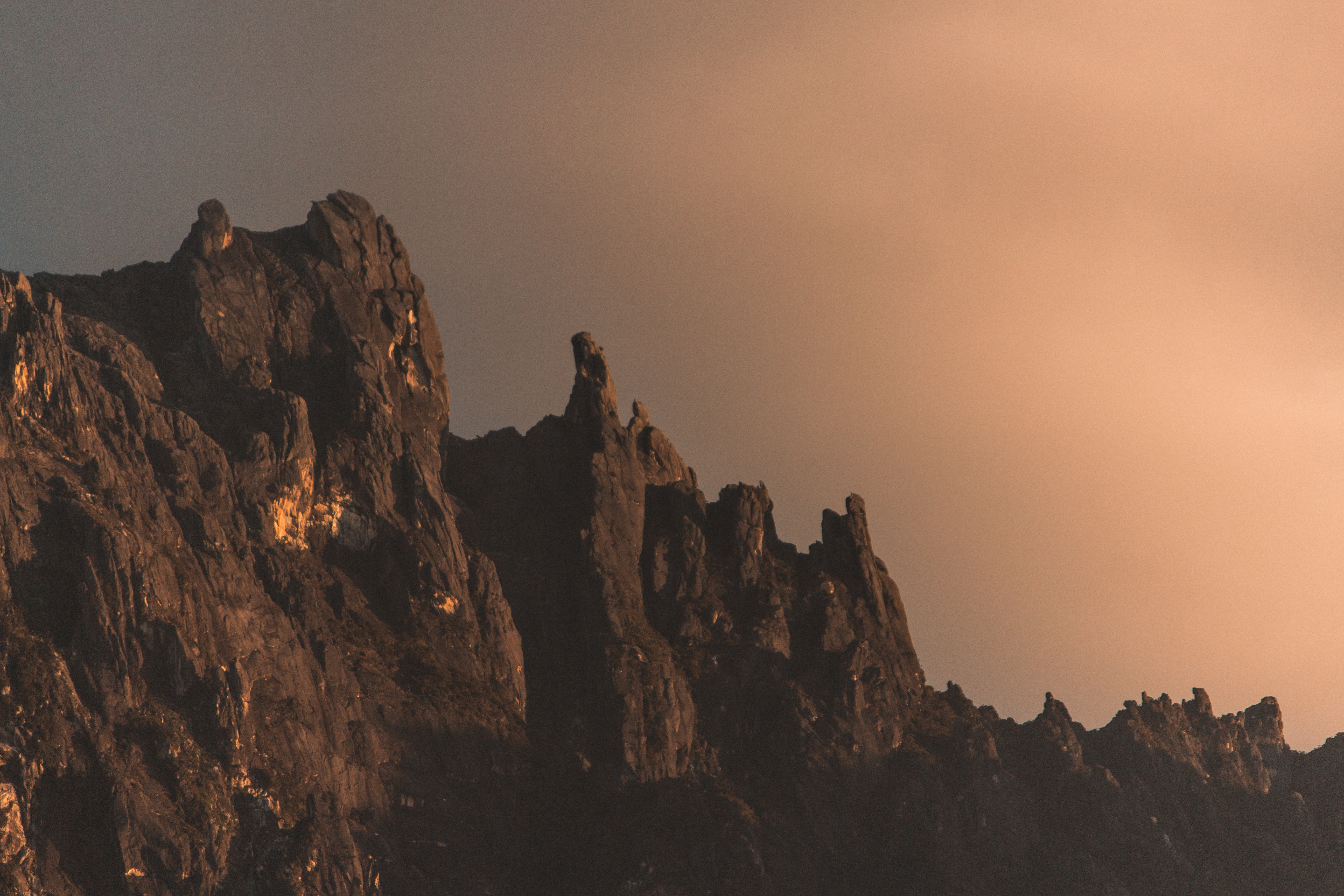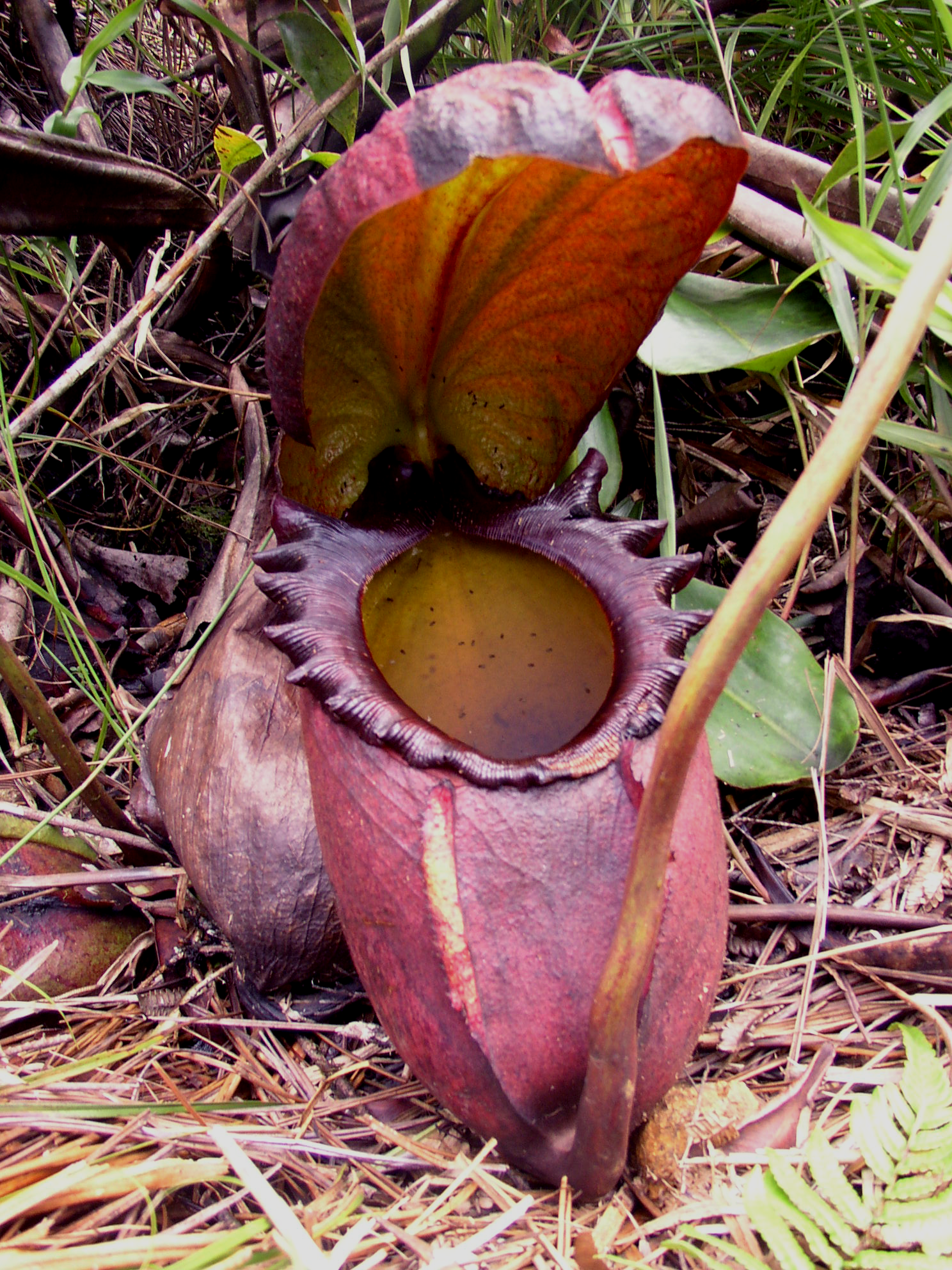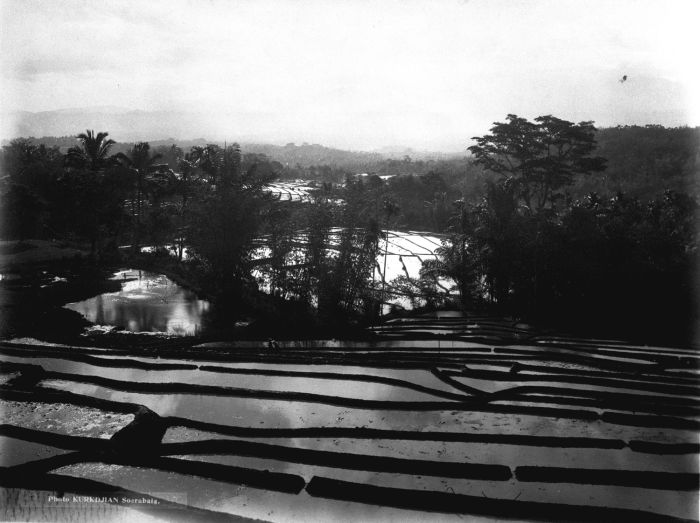|
Quercus Argentata
''Quercus argentata'' is an evergreen tropical oak species in the beech family Fagaceae. There are no known subspecies. It is placed in subgenus ''Cerris'', section ''Cyclobalanopsis''. It derived its name from the silvery hairs on the lower surface of its leaves. The species is distributed in Borneo, Sumatra including Bangka, the peninsula of Malaysia, and western Java. It can grow 10 meters and up heights of 40 meters. Distribution and habitat ''Quercus argentata'' is native to the islands of Sumatra, Borneo (though absent in Brunei), and Western Java, as well as to Peninsular Malaysia. This oak is found on Mount Kinabalu in lower montane forests up to an elevation of 2,700 m above sea level. It occurs up to 3,350 meters above sea level in lowland mixed dipterocarp Dipterocarpaceae is a family of 16 genera and about 695 known species of mainly tropical lowland rainforest trees. The family name, from the type genus ''Dipterocarpus'', is derived from Greek (''di'' = ... [...More Info...] [...Related Items...] OR: [Wikipedia] [Google] [Baidu] |
Pieter Willem Korthals
Pieter Willem Korthals (September 1, 1807, Amsterdam – March 1892, Haarlem) was a Dutch botanist. Korthals was the official botanist with the Dutch East India Service from 1831 to 1836. Among his many discoveries was the medicinal plant Kratom (''Mitragyna speciosa''). Korthals wrote the first monograph on the tropical pitcher plants, " Over het geslacht ''Nepenthes''", published in 1839. Carl Ludwig Blume named the botanical genus ''Korthalsia'' (family Arecaceae) after Korthals, and Philippe Édouard Léon Van Tieghem introduced the genus name ''Korthalsella'' (family Santalaceae) in his honor. Hawaiian Mistletoes (Korthalsella Species) |
Kinabalu Montane Alpine Meadows
Mount Kinabalu ( ms, Gunung Kinabalu, Dusun: ''Gayo Ngaran or Nulu Nabalu'') is the highest mountain in Borneo and Malaysia. With an elevation of , it is third-highest peak of an island on Earth, and 20th most prominent mountain in the world by topographic prominence. The mountain is located in Ranau district, West Coast Division of Sabah, Malaysia. It is protected as Kinabalu Park, a World Heritage Site. In 1997, a re-survey using satellite technology established its summit (known as Low's Peak) height at above sea level, which is some less than the previously thought and hitherto published figure of . Phillipps, A. & F. Liew 2000. ''Globetrotter Visitor's Guide – Kinabalu Park''. New Holland Publishers (UK) Ltd. The mountain and its surroundings are among the most important biological sites in the world, with between 5,000 and 6,000 species of plants, 326 species of birds, and more than 100 mammalian species identified. Among this rich collection of wildlife are famo ... [...More Info...] [...Related Items...] OR: [Wikipedia] [Google] [Baidu] |
Flora Of Sumatra
Flora is all the plant life present in a particular region or time, generally the naturally occurring (indigenous) native plants. Sometimes bacteria and fungi are also referred to as flora, as in the terms ''gut flora'' or ''skin flora''. Etymology The word "flora" comes from the Latin name of Flora, the goddess of plants, flowers, and fertility in Roman mythology. The technical term "flora" is then derived from a metonymy of this goddess at the end of the sixteenth century. It was first used in poetry to denote the natural vegetation of an area, but soon also assumed the meaning of a work cataloguing such vegetation. Moreover, "Flora" was used to refer to the flowers of an artificial garden in the seventeenth century. The distinction between vegetation (the general appearance of a community) and flora (the taxonomic composition of a community) was first made by Jules Thurmann (1849). Prior to this, the two terms were used indiscriminately.Thurmann, J. (1849). ''Essai de Phyt ... [...More Info...] [...Related Items...] OR: [Wikipedia] [Google] [Baidu] |
Flora Of Peninsular Malaysia
Flora is all the plant life present in a particular region or time, generally the naturally occurring (indigenous) native plants. Sometimes bacteria and fungi are also referred to as flora, as in the terms '' gut flora'' or '' skin flora''. Etymology The word "flora" comes from the Latin name of Flora, the goddess of plants, flowers, and fertility in Roman mythology. The technical term "flora" is then derived from a metonymy of this goddess at the end of the sixteenth century. It was first used in poetry to denote the natural vegetation of an area, but soon also assumed the meaning of a work cataloguing such vegetation. Moreover, "Flora" was used to refer to the flowers of an artificial garden in the seventeenth century. The distinction between vegetation (the general appearance of a community) and flora (the taxonomic composition of a community) was first made by Jules Thurmann (1849). Prior to this, the two terms were used indiscriminately.Thurmann, J. (1849). ''Essai de ... [...More Info...] [...Related Items...] OR: [Wikipedia] [Google] [Baidu] |
Trees Of Borneo
In botany, a tree is a perennial plant with an elongated stem, or trunk, usually supporting branches and leaves. In some usages, the definition of a tree may be narrower, including only woody plants with secondary growth, plants that are usable as lumber or plants above a specified height. In wider definitions, the taller palms, tree ferns, bananas, and bamboos are also trees. Trees are not a taxonomic group but include a variety of plant species that have independently evolved a trunk and branches as a way to tower above other plants to compete for sunlight. The majority of tree species are angiosperms or hardwoods; of the rest, many are gymnosperms or softwoods. Trees tend to be long-lived, some reaching several thousand years old. Trees have been in existence for 370 million years. It is estimated that there are some three trillion mature trees in the world. A tree typically has many secondary branches supported clear of the ground by the trunk. This trunk typically co ... [...More Info...] [...Related Items...] OR: [Wikipedia] [Google] [Baidu] |
Flora Of Indo-China
Flora is all the plant life present in a particular region or time, generally the naturally occurring (indigenous (ecology), indigenous) native plant, native plants. Sometimes bacteria and fungi are also referred to as flora, as in the terms ''gut flora'' or ''skin flora''. Etymology The word "flora" comes from the Latin name of Flora (mythology), Flora, the goddess of plants, flowers, and fertility in Roman mythology. The technical term "flora" is then derived from a metonymy of this goddess at the end of the sixteenth century. It was first used in poetry to denote the natural vegetation of an area, but soon also assumed the meaning of a work cataloguing such vegetation. Moreover, "Flora" was used to refer to the flowers of an artificial garden in the seventeenth century. The distinction between vegetation (the general appearance of a community) and flora (the taxonomic composition of a community) was first made by Jules Thurmann (1849). Prior to this, the two terms were used ... [...More Info...] [...Related Items...] OR: [Wikipedia] [Google] [Baidu] |
Quercus
An oak is a tree or shrub in the genus ''Quercus'' (; Latin "oak tree") of the beech family, Fagaceae. There are approximately 500 extant species of oaks. The common name "oak" also appears in the names of species in related genera, notably '' Lithocarpus'' (stone oaks), as well as in those of unrelated species such as ''Grevillea robusta'' (silky oaks) and the Casuarinaceae (she-oaks). The genus ''Quercus'' is native to the Northern Hemisphere, and includes deciduous and evergreen species extending from cool temperate to tropical latitudes in the Americas, Asia, Europe, and North Africa. North America has the largest number of oak species, with approximately 160 species in Mexico of which 109 are endemic and about 90 in the United States. The second greatest area of oak diversity is China, with approximately 100 species. Description Oaks have spirally arranged leaves, with lobate margins in many species; some have serrated leaves or entire leaves with smooth margins. ... [...More Info...] [...Related Items...] OR: [Wikipedia] [Google] [Baidu] |
Quercus Nivea
An oak is a tree or shrub in the genus ''Quercus'' (; Latin "oak tree") of the beech family, Fagaceae. There are approximately 500 extant species of oaks. The common name "oak" also appears in the names of species in related genera, notably ''Lithocarpus'' (stone oaks), as well as in those of unrelated species such as ''Grevillea robusta'' (silky oaks) and the Casuarinaceae (she-oaks). The genus ''Quercus'' is native to the Northern Hemisphere, and includes deciduous and evergreen species extending from cool temperate to tropical latitudes in the Americas, Asia, Europe, and North Africa. North America has the largest number of oak species, with approximately 160 species in Mexico of which 109 are endemic and about 90 in the United States. The second greatest area of oak diversity is China, with approximately 100 species. Description Oaks have spirally arranged leaves, with lobate margins in many species; some have serrated leaves or entire leaves with smooth margins. Man ... [...More Info...] [...Related Items...] OR: [Wikipedia] [Google] [Baidu] |
Dipterocarpaceae
Dipterocarpaceae is a family of 16 genera and about 695 known species of mainly tropical lowland rainforest trees. The family name, from the type genus ''Dipterocarpus'', is derived from Greek (''di'' = two, ''pteron'' = wing and ''karpos'' = fruit) and refers to the two-winged fruit. The largest genera are ''Shorea'' (196 species), ''Hopea'' (104 species), ''Dipterocarpus'' (70 species), and ''Vatica'' (65 species).Ashton, P.S. Dipterocarpaceae. In ''Tree Flora of Sabah and Sarawak,'' Volume 5, 2004. Soepadmo, E., Saw, L. G. and Chung, R. C. K. eds. Government of Malaysia, Kuala Lumpur, Malaysia. Many are large forest-emergent species, typically reaching heights of 40–70 m, some even over 80 m (in the genera ''Dryobalanops'', ''Hopea'' and ''Shorea''), with the tallest known living specimen (''Shorea faguetiana'') 93.0 m tall. The species of this family are of major importance in the timber trade. Their distribution is pantropical, from northern South America to Africa, the Se ... [...More Info...] [...Related Items...] OR: [Wikipedia] [Google] [Baidu] |
Mount Kinabalu
Mount Kinabalu ( ms, Gunung Kinabalu, Dusun language, Dusun: ''Gayo Ngaran or Nulu Nabalu'') is the highest mountain in Borneo and Malaysia. With an elevation of , it is List of islands by highest point, third-highest peak of an island on Earth, and List of mountain peaks by prominence, 20th most prominent mountain in the world by topographic prominence. The mountain is located in Ranau District, Ranau district, West Coast Division of Sabah, Malaysia. It is protected as Kinabalu Park, a World Heritage Site. In 1997, a re-survey using satellite technology established its summit (known as Low's Peak) height at above sea level, which is some less than the previously thought and hitherto published figure of .Anthea Phillipps, Phillipps, A. & Francis Liew, F. Liew 2000. ''Globetrotter Visitor's Guide – Kinabalu Park''. New Holland Publishers (UK) Ltd. The mountain and its surroundings are among the most important biological sites in the world, with between 5,000 and 6,000 speci ... [...More Info...] [...Related Items...] OR: [Wikipedia] [Google] [Baidu] |
Evergreen
In botany, an evergreen is a plant which has foliage that remains green and functional through more than one growing season. This also pertains to plants that retain their foliage only in warm climates, and contrasts with deciduous plants, which completely lose their foliage during the winter or dry season. Evergreen species There are many different kinds of evergreen plants, both trees and shrubs. Evergreens include: *Most species of conifers (e.g., pine, hemlock, blue spruce, and red cedar), but not all (e.g., larch) *Live oak, holly, and "ancient" gymnosperms such as cycads *Most angiosperms from frost-free climates, and rainforest trees *All Eucalypts * Clubmosses and relatives *Bamboos The Latin binomial term , meaning "always green", refers to the evergreen nature of the plant, for instance :'' Cupressus sempervirens'' (a cypress) :''Lonicera sempervirens'' (a honeysuckle) :''Sequoia sempervirens'' (a sequoia) Leaf longevity in evergreen plants varies from a few months ... [...More Info...] [...Related Items...] OR: [Wikipedia] [Google] [Baidu] |
West Java
West Java ( id, Jawa Barat, su, ᮏᮝ ᮊᮥᮜᮧᮔ᮪, romanized ''Jawa Kulon'') is a province of Indonesia on the western part of the island of Java, with its provincial capital in Bandung. West Java is bordered by the province of Banten and the country's capital region of Jakarta to the west, the Java Sea to the north, the province of Central Java to the east and the Indian Ocean to the south. With Banten, this province is the native homeland of the Sundanese people, the second-largest ethnic group in Indonesia. West Java was one of the first eight provinces of Indonesia formed following the country's independence proclamation and was later legally re-established on 14 July 1950. In 1966, the city of Jakarta was split off from West Java as a 'special capital region' (), with a status equivalent to that of a province, while in 2000 the western parts of the province were in turn split away to form a separate Banten province. Even following these split-offs, West Java is ... [...More Info...] [...Related Items...] OR: [Wikipedia] [Google] [Baidu] |




.png)





